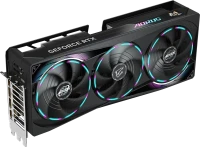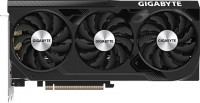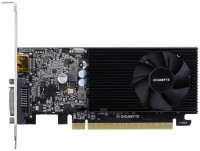Graphics Cards Gigabyte series Vision (creative)
prices on 2 modelsGigabyte Vision Series
Graphics card manufacturers decided not to wait for NVIDIA's Quadro line on the Ampere architecture, but took matters into their own hands. So, in the fall of 2020, the Taiwanese giant Gigabyte announced a completely new line of Vision video accelerators designed for representatives of creative professions. Their power is enough for games and for any work (editing, rendering, etc.), and in terms of level they are somewhere between relatively simple Eagle models and fancy Aorus graphics cards.
 |
At first glance, the representatives of the Vision family differ from other popular lines of the company only in appearance. The printed circuit board and the blades of the turntables in Vision are usually painted white, and all this stuff is covered with a strict metal casing, reminiscent of the aesthetics of Apple laptops. The colour of the cooling system also plays a combination of white plastic and rough unpainted aluminium. In general, Gandalf approves. Gigabyte itself says that they tried to separate Vision cards from other gaming components in a similar way.
Usually, the Vision line includes massive flagship models of the GeForce RTX 3060/3070/3080 level with the well-known Windforce 3X cooling system consisting of three coolers with a multidirectional impeller. Under normal load, three fans do not rotate, the graphics card operates in passive silent mode, being cooled by the air flow of the case. Most models of this family have increased the input voltage limit out of the box and, accordingly, the operating frequencies of the core and memory are increased, so Vision cards put forward serious requirements for the power supply. For example, the RTX 3080 Vision "consumes" 360 watts of energy instead of the reference 320 watts, so the manufacturer recommends a power supply unit for 750 watts instead of 700 watts.






